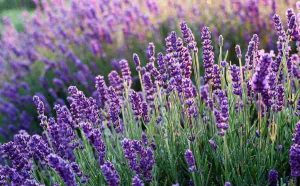With the arrival of the heat and the need to adapt our gardens to an increasingly dry climate, the concept of Xeriscaping comes to mind. Let me tell you the most interesting part !
It is one of the strongest trends in the sector for 2025. Not only does this form of gardening respect the planet by reducing water consumption, it also offers aesthetics, originality and very little maintenance. . And that’s where I feel particularly concerned, because respect for the environment has always been one of my objectives, and also for our quality brand -lou lou®- that you already know.
If you are thinking of renovating your garden or balcony in May, read on!
What is Xeriscaping?
Xeriscaping (from the Greek ‘xeros’, meaning dry) is a garden design technique that favours the use of native and drought-resistant plants, as well as other elements that help conserve water, such as natural mulch, decorative gravels and efficient irrigation systems. This practice began to be observed in dry regions such as the south-west of the United States, but in recent years it has become more widespread in Mediterranean climates such as Spain, France, Italy……
Why opt for Xeriscaping? Here are its main priorities:
- Saving water: In a country where heat waves and watering restrictions are becoming more and more frequent, reducing water consumption is very important for everyone.
- Low maintenance: This type of garden requires less care, less pruning and practically no fertilisers, . I’m sure that many of you will be tempted !
- Modern and natural aesthetics: The combination of stones, wood and hardy plants creates a minimalist, clean and visually appealing design.
- Real sustainability: Encouraging local species and avoiding excessive use of water or chemicals is a direct way to contribute to the environmental care which is so important to Rachel.
Ideal plants for a dry and living garden
As you know, I live in the south of Spain, and the ideal is to use plants for a dry garden that fill the little corners with life. Here are a few ornamental plants that are perfect for this type of garden in warm climates like mine:

– Aromatic plants such as rosemary (rosmarinus officinalis) which is hardy and also attracts bee-like pollinators, or lavender (lavandula angustifolia), with its beautiful flowers, wonderful aroma and low watering requirements.
– The yucca family (yucca spp.). This range is ideal for adding an architectural touch to the garden. It withstands direct sun and drought like no other – I love it!

– Crassulas and echeverias: Nature is very creative with these beautiful things. Succulent plants come in an infinite number of shapes and colours, many of them bloom and offer very interesting changes in a garden.
– Oleanders and lantanas: These shrubs flower for months on end and tolerate extreme heat perfectly, making them a colourful and cheerful choice.
What advice would you give for creating a Xeriscaping? ? I’ll summarise the four most important points:
- Plan the design: take advantage of possible unevenness, shady areas and sun exposure to place the right varieties.
- Mulch the soil: Use pine bark, gravel or volcanic stone to conserve soil moisture and prevent weeds.
- Choose a drip irrigation system: This is the method we usually use in the production of our plants. It is very efficient and goes directly to the root, avoiding water loss.
- Incorporate natural elements: Logs, large stones or gravel paths that beautify without adding maintenance.
If you live in a flat and only have a terrace or balcony, you can also join this trend by using pots or planters! Use the containers best suited to your space with well-drained substrates, choose resistant species such as cactus, aloe vera or sansevieria, and combine them with decorative stones. You will get a very modern result with the same characteristics!
I believe that xeriscaping has gone from being a functional solution to an aesthetic and ecological statement with a great future. Not only does it meet a climatic need, but it also offers a new way of understanding the world of domestic gardening more in tune with the environment and the future, while remaining practical and environmentally friendly.
So, what do you think?

![WhatsApp_Image_2025-05-21_at_12.01.48-min[1]](https://rachelandco.net/wp-content/uploads/WhatsApp_Image_2025-05-21_at_12.01.48-min1-1-20x12.jpeg)
